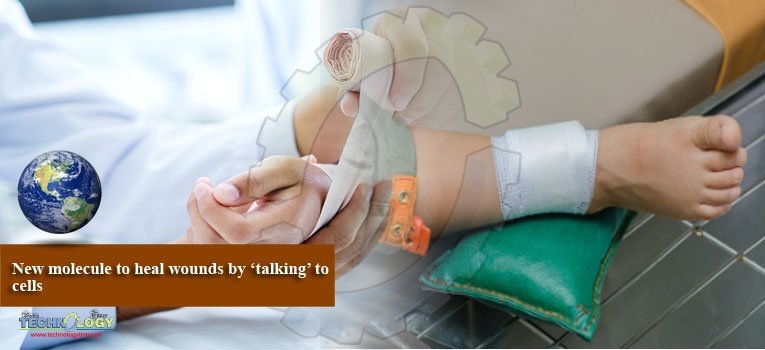Encouraging wound healing through new technologies, researchers have created a new molecule that can ‘talk’ to the cell in the area near the injured tissues and hence help in healing.

Researchers from the Imperial College London made a new nanotechnology that encourages wound healing by making it interact with the cells. “This intelligent healing is useful during every phase of the healing process, has the potential to increase the body’s chance to recover, and has far-reaching uses on many different types of wounds,” said lead researcher Ben Almquist.
The wound-healing molecules have been named as ‘Traction force-Activated Payloads’ (TrAPs) and their method lets materials talk to the body’s natural repair system to drive healing. These molecules were created through folding segments of DNA into aptamers – 3D shapes that cling tightly to proteins. A customizable ‘handle’ was then added to one end of the aptamer.
As the cells navigated in the area near a wound, they would pull on this handle and hence cause the aptamer to open and release hidden healing proteins that encourages wound healing. By changing the handle, the researchers were able to control which cells activated the TrAPs and release specific therapeutic proteins based on which cells are present at a given point in time.
In doing so, the TrAPs generate materials that can smartly interact with the correct type of cell at the correct time during wound repair.
Almquist said, “TrAPs provide a flexible method of actively communicating with wounds, as well as key instructions when and where they are needed.” The technique is adaptable and can be used in different injuries like fractured bones, scar tissue after heart attack, and damaged nerves, detailed the study published in the journal Advanced Materials.
The research for now has only been tested in laboratories and more time is needed to take them to clinical trial stage. Also, apart from being easy to make, TrAPs are also easy to deliver and can be delivered via anything from collagen sponges to polyacrylamide gels.